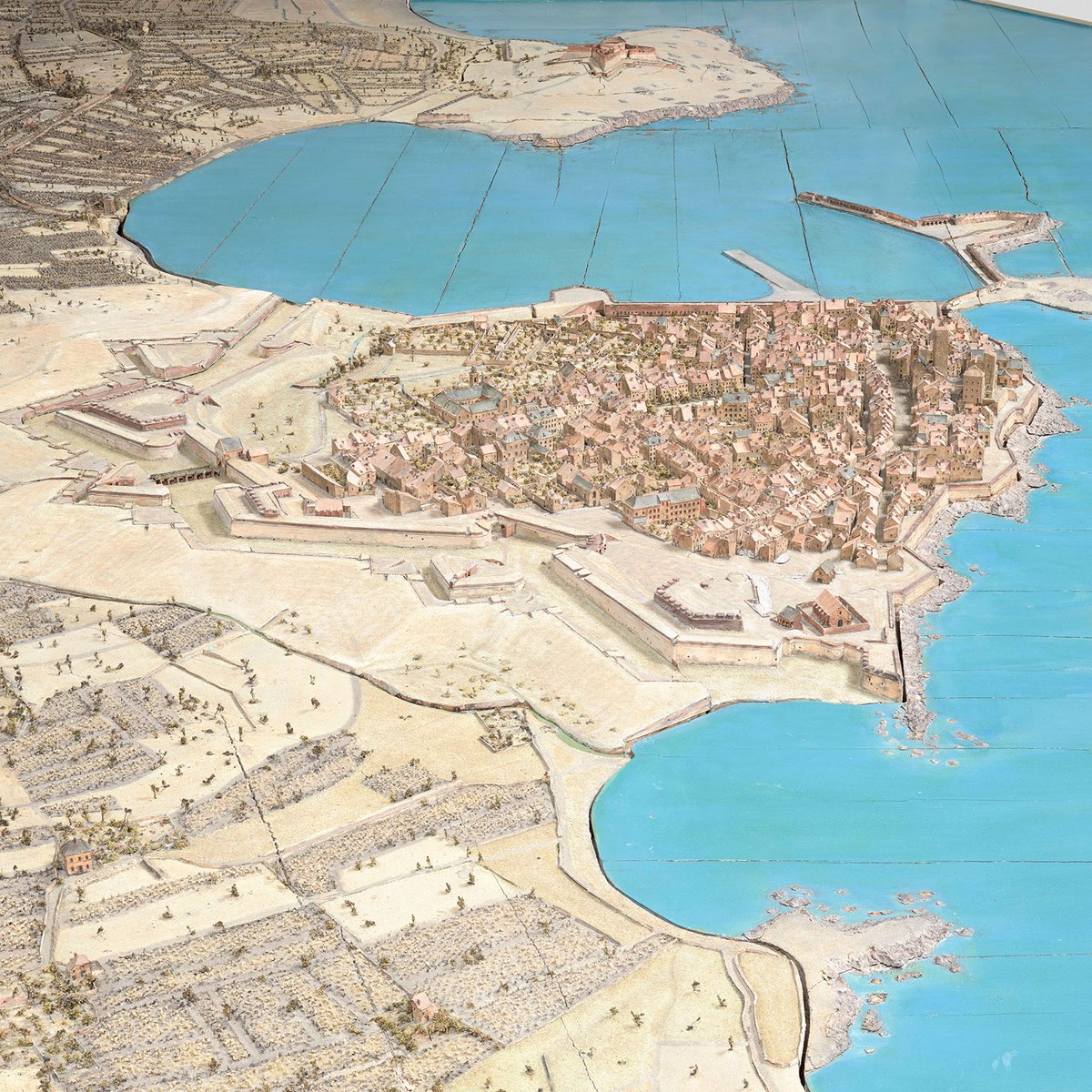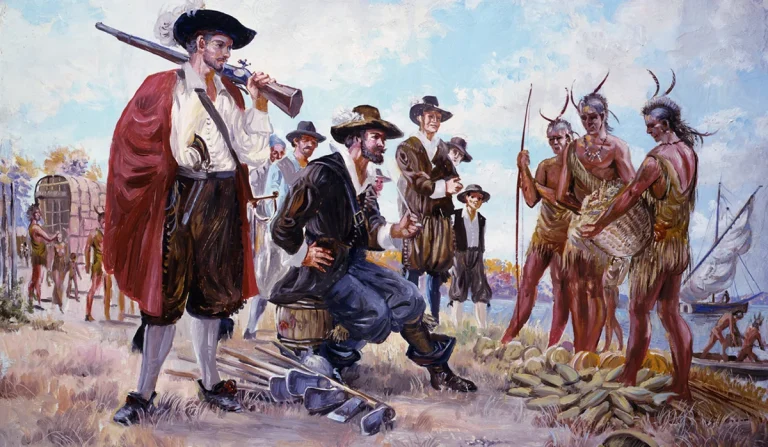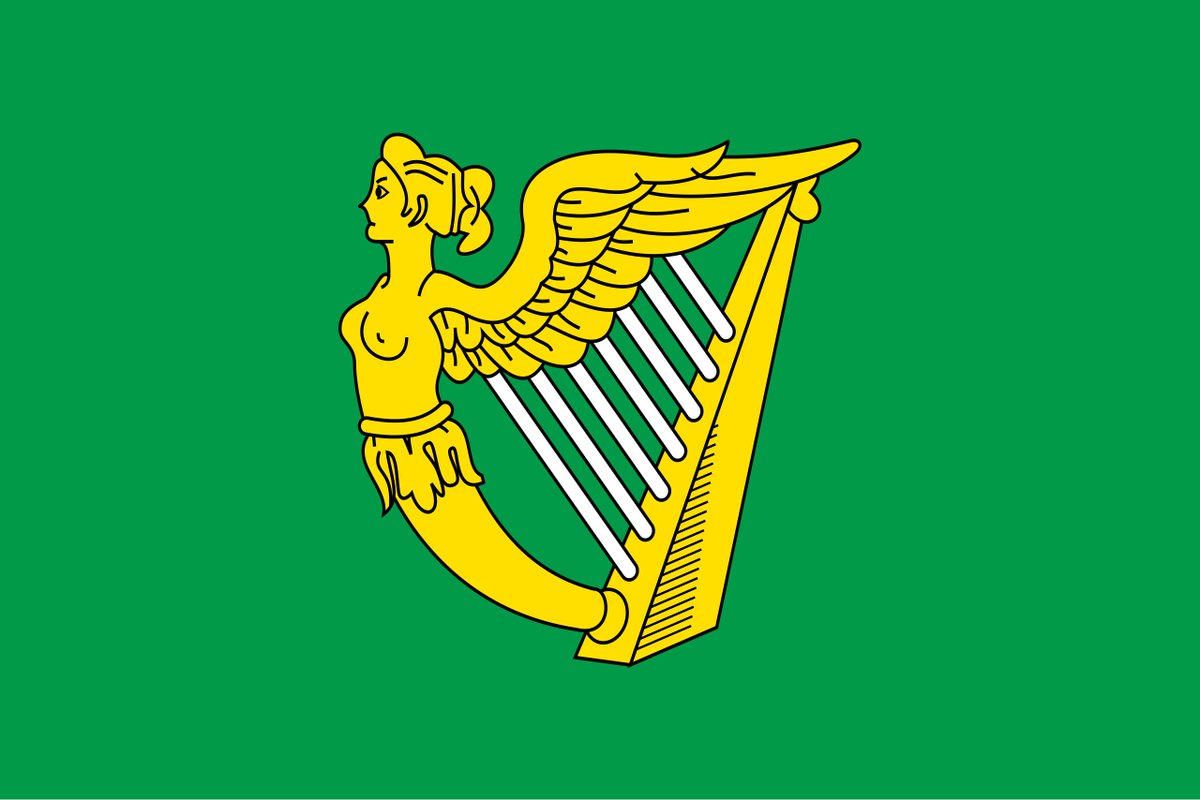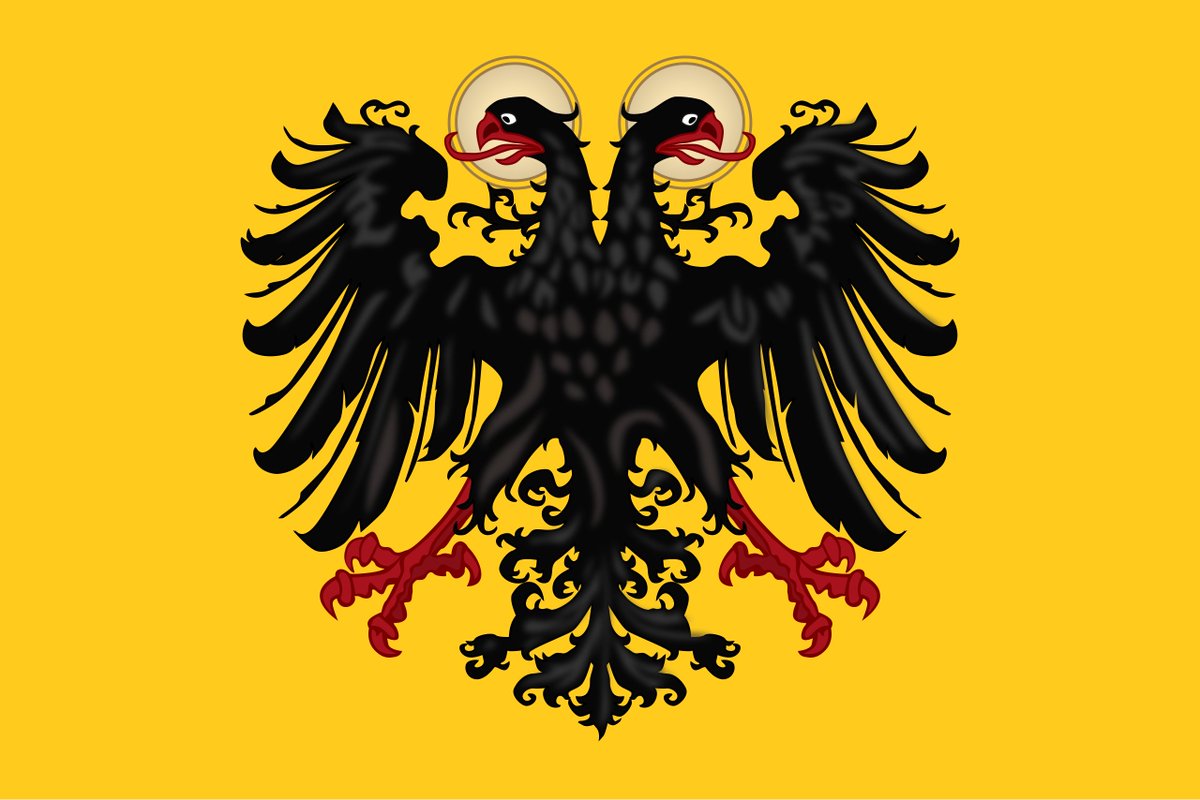16th century armies were often accompanied by a large number of camp followers.
For example Spanish forces moving from Italy to Hungary in 1532 had 7,000 soldiers accompanied by 13,000 camp followers!
Generals often tried to reduce the number of "useless people" in armies.🧵



For example Spanish forces moving from Italy to Hungary in 1532 had 7,000 soldiers accompanied by 13,000 camp followers!
Generals often tried to reduce the number of "useless people" in armies.🧵

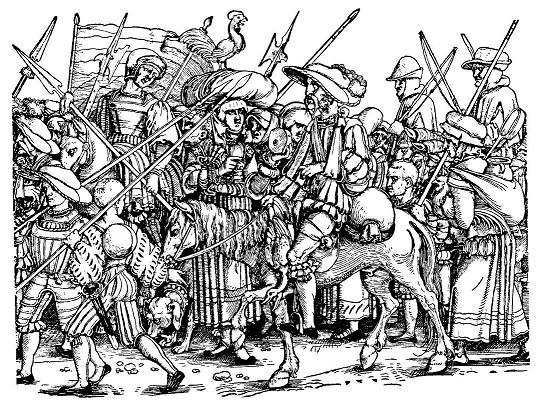

In early 16th century it was normal for armies to have an extensive train of camp followers with them.
It included craftsmen like tailors, cobblers, barbers and surgeons, many beasts of burden and carts with belongings of soldiers.
There were also women and children.
It included craftsmen like tailors, cobblers, barbers and surgeons, many beasts of burden and carts with belongings of soldiers.
There were also women and children.
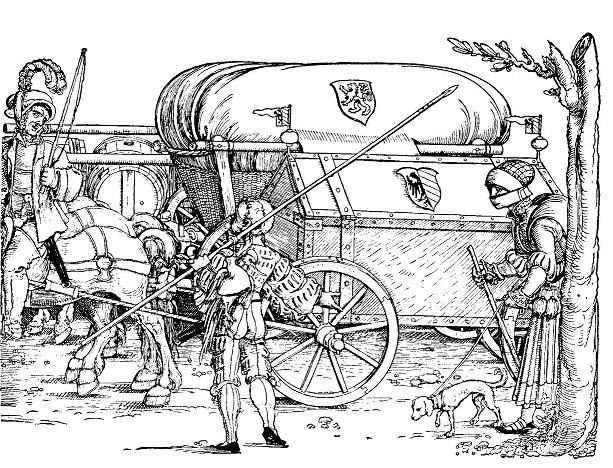
Some soldiers brought their wives and children with them on campaigns, though most of them preferred to leave them behind as military life was dangerous, especially on campaigns far away.
Sometimes soldiers entered relationships with local women who then followed them.
Sometimes soldiers entered relationships with local women who then followed them.
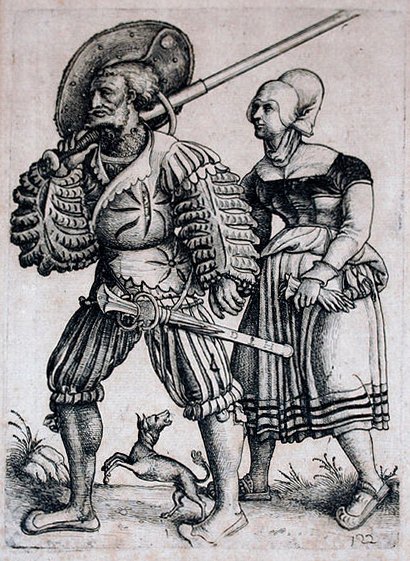
The most problematic was the presence of prostitutes although they were also seen as practically necessary.
As the popular saying went, "no whores, no war."
The Landsknecht mercenary armies even had a specific officer Hurenwaibel ("whore's sergeant") to supervise them.
As the popular saying went, "no whores, no war."
The Landsknecht mercenary armies even had a specific officer Hurenwaibel ("whore's sergeant") to supervise them.
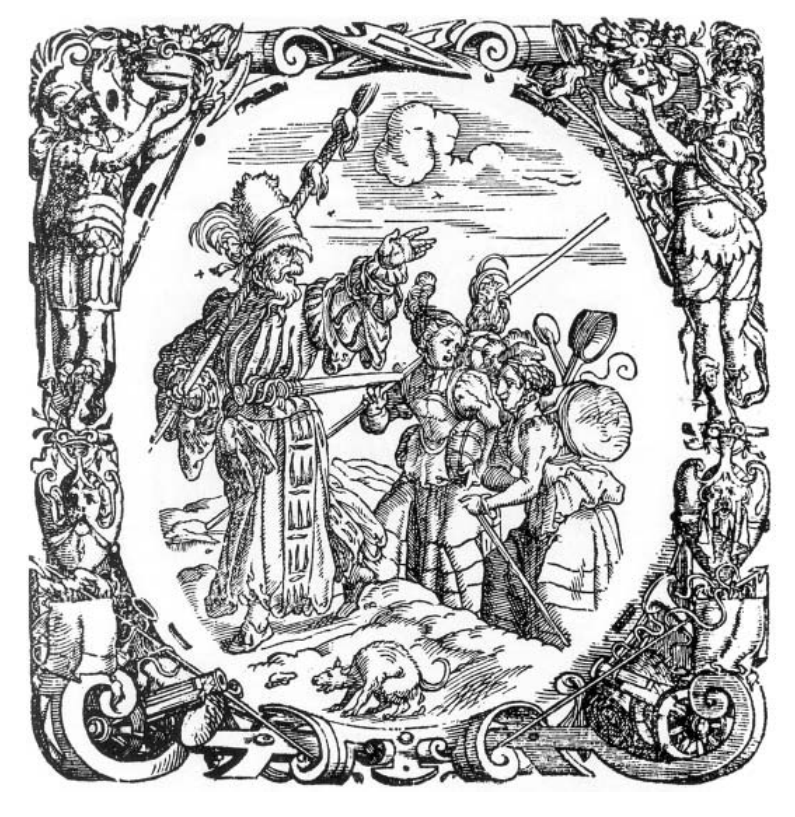
The office of Hurenwaibel was actually an important job as he also had the task of leading the train of camp followers and making sure they did not impede military movements.
This office was usually given to an experienced old soldier who was no longer fit for fighting.
This office was usually given to an experienced old soldier who was no longer fit for fighting.
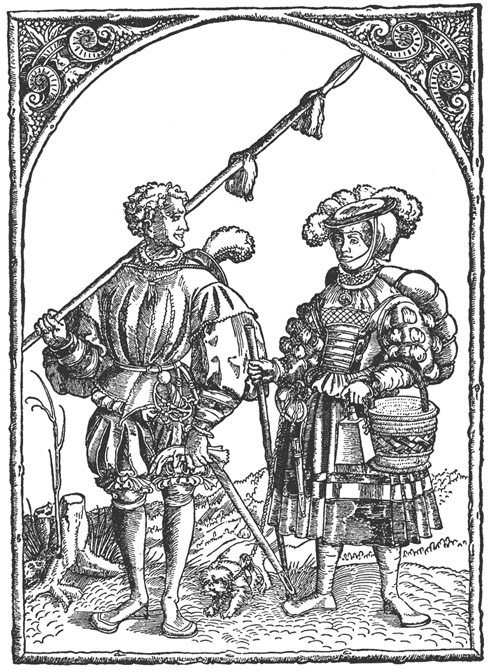
In the Landsknecht armies, camp follower contingent was called Tross.
The Tross camp was a necessary part of Landsknecht mercenary way of life and provided various services and a social environment for soldiers while they were detached from regular settled society.
The Tross camp was a necessary part of Landsknecht mercenary way of life and provided various services and a social environment for soldiers while they were detached from regular settled society.
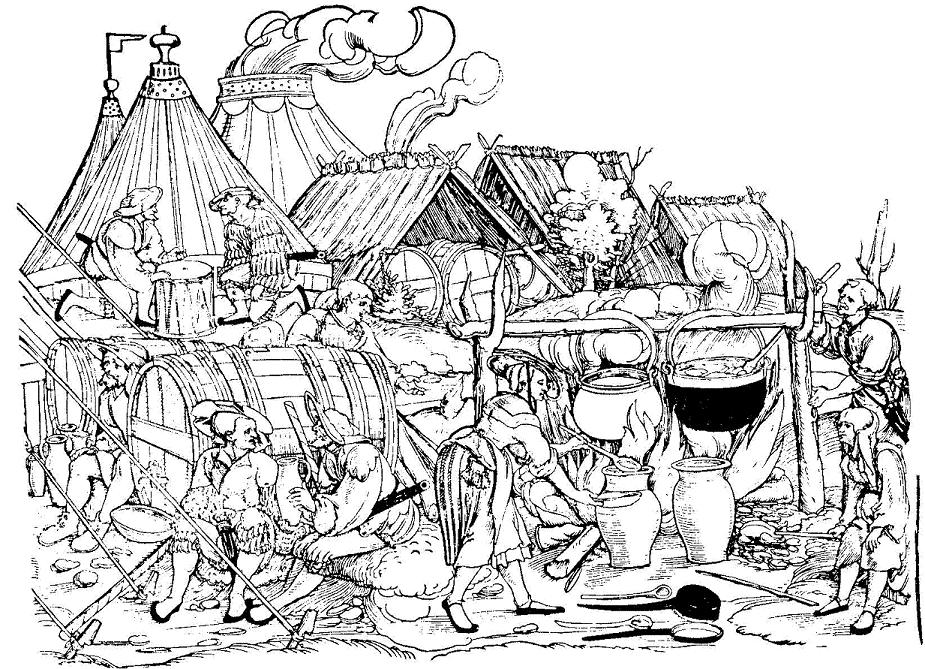
The presence of various camp followers was seen as necessary for physical and mental well-being of soldiers!
The generals were also aware that soldiers were sensitive when dealing with their obtained property and their women.
The generals were also aware that soldiers were sensitive when dealing with their obtained property and their women.
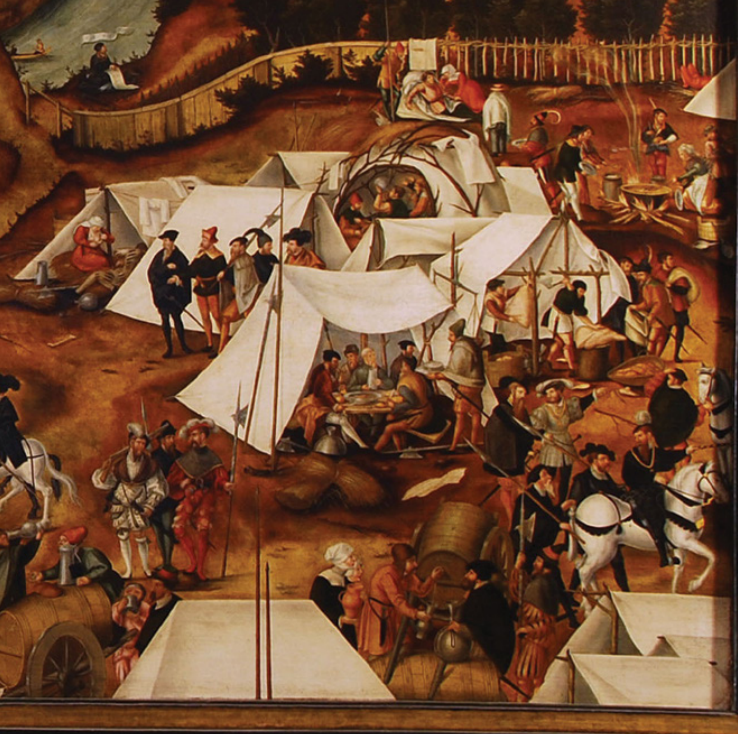
Veteran Spanish soldier Sancho de Londoño believed that "at least eight women for every 100 soldiers" should be allowed to accompany the army.
He also believed that this would prevent the soldiers from "procuring the wives, daughters and sisters of the local inhabitants."
He also believed that this would prevent the soldiers from "procuring the wives, daughters and sisters of the local inhabitants."
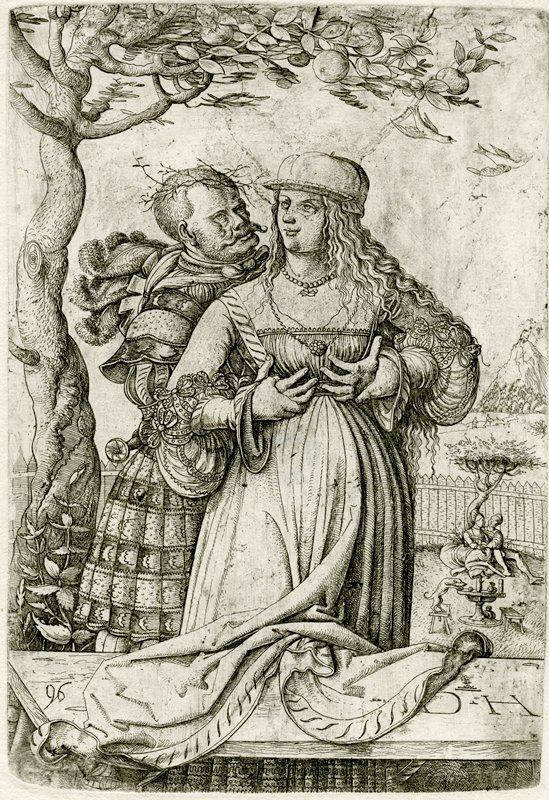
However certain limits had to be imposed as too many camp followers would have a negative effect on the army.
On many occasions generals tried to reduce the number of camp followers and the amount of baggage soldiers carried with them!
On many occasions generals tried to reduce the number of camp followers and the amount of baggage soldiers carried with them!
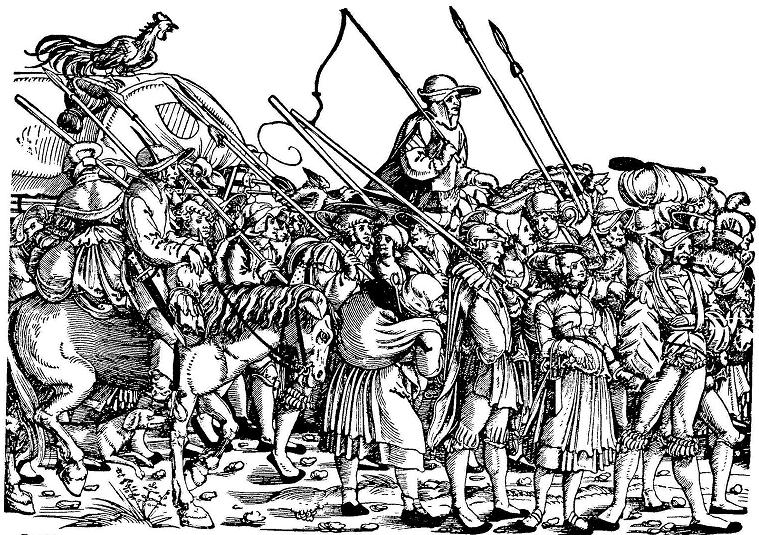
Besides "useless people" following the army, too many animals was also seen as a problem.
A complaint was made that the Imperial army camped near Genoa in 1522 was accompanied by a large number of "whores and thieves, and an extraordinary amount of horses and beasts."
A complaint was made that the Imperial army camped near Genoa in 1522 was accompanied by a large number of "whores and thieves, and an extraordinary amount of horses and beasts."
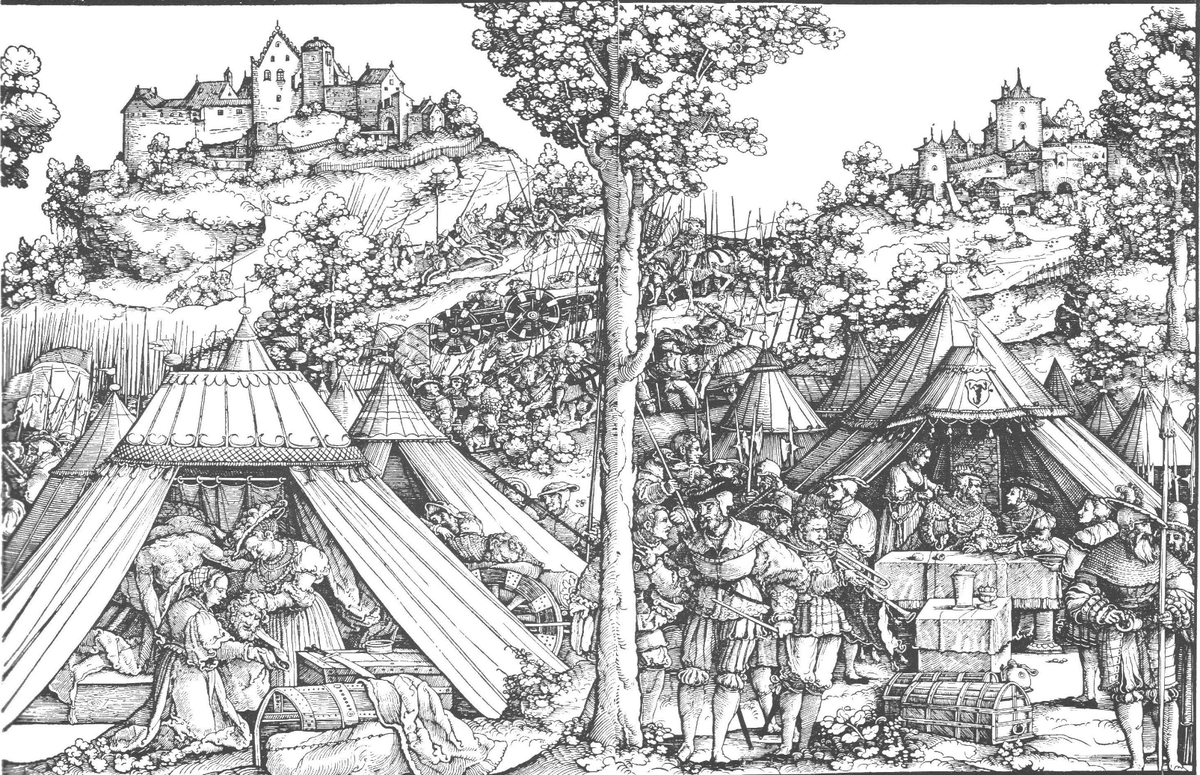
To deal with this problem, Marquess of Pescara issued a decree in 1522 allowing each company to keep only one horse.
When one of the soldiers protested claiming soldiers deserved "by the honor of their virtue to not only be carried be horses, but by carts," Pescara executed him.


When one of the soldiers protested claiming soldiers deserved "by the honor of their virtue to not only be carried be horses, but by carts," Pescara executed him.
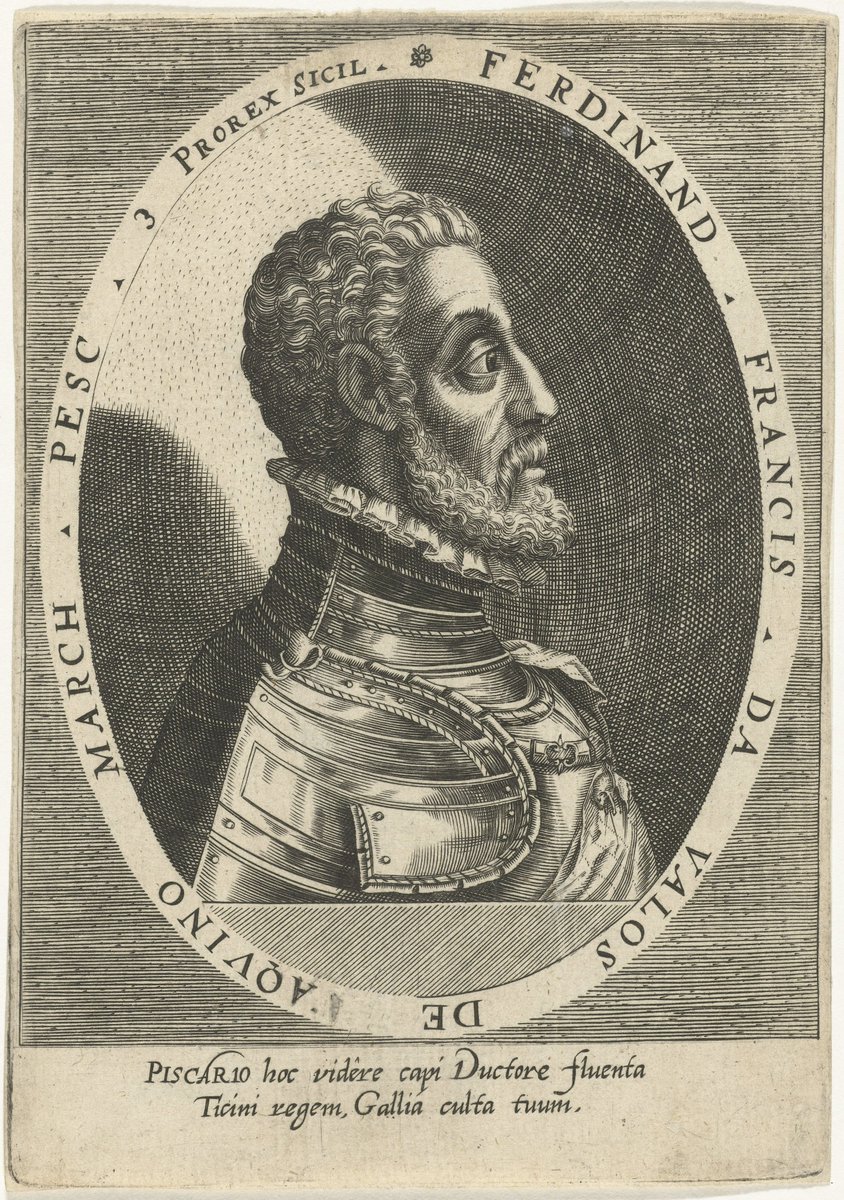

His cousin Marquis of Vasto did a similar thing in 1532 and issued a decree to drastically reduce the number of camp followers and amount of baggage that the soldiers carried with them.
This was to the great displeasure of rich captains who preferred to have a lot of baggage.
This was to the great displeasure of rich captains who preferred to have a lot of baggage.
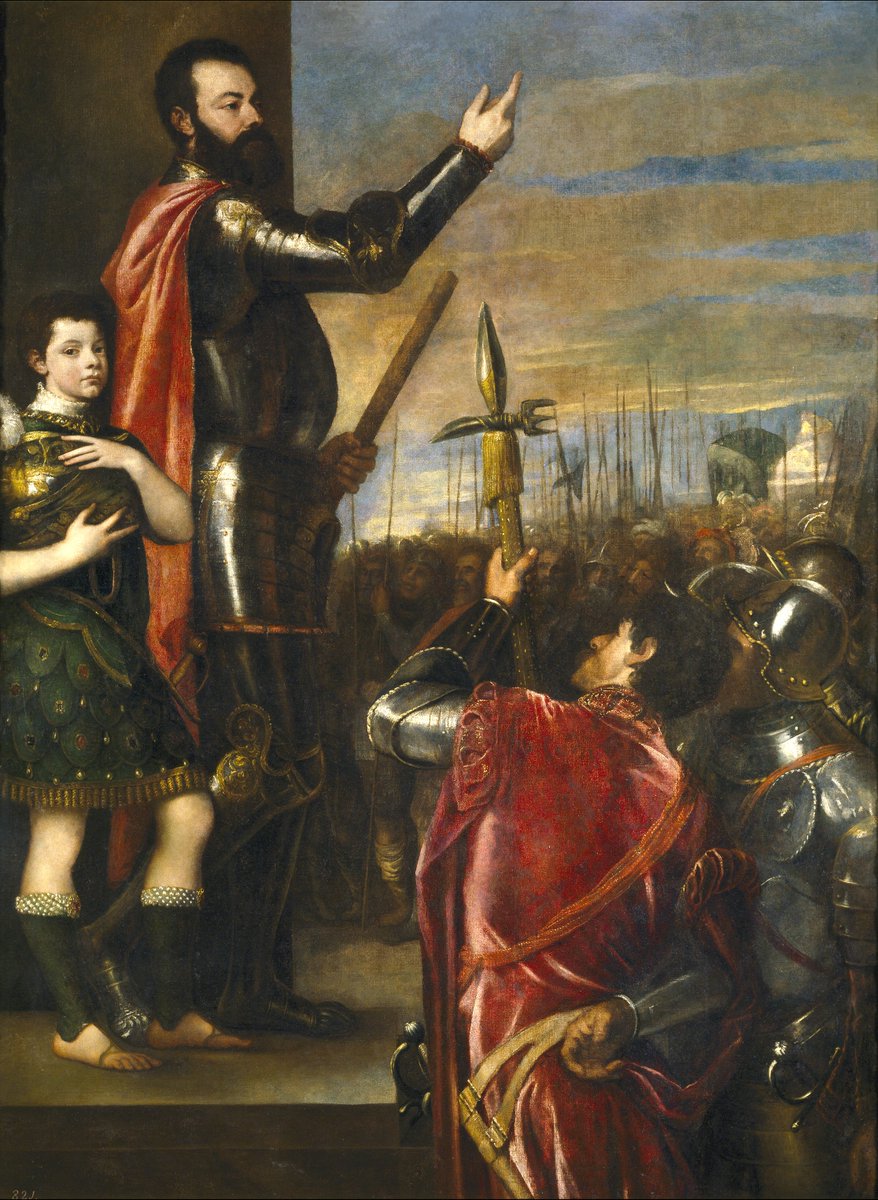
Vasto also tried to limit the number of prostitutes travelling with the army. He issued special permits and only allowed the prostitutes with these permits to follow the army.
He later arrested 40 women without permits and hanged one of them as an example to others.
He later arrested 40 women without permits and hanged one of them as an example to others.

The soldiers hated such rules and chances of mutinies were always high.
But they also tried to circumvent the rules with clever tricks.
For example there were cases of soldiers entering in fake marriages with prostitutes and concubines and then claim they were their wives.
But they also tried to circumvent the rules with clever tricks.
For example there were cases of soldiers entering in fake marriages with prostitutes and concubines and then claim they were their wives.

However from the middle of 16th century on the authorities were increasingly more successful in regulating the size of camp follower train in the armies they hired.
The attitudes towards prostitutes in armies were also increasingly hostile and attempts were made to ban them.
The attitudes towards prostitutes in armies were also increasingly hostile and attempts were made to ban them.
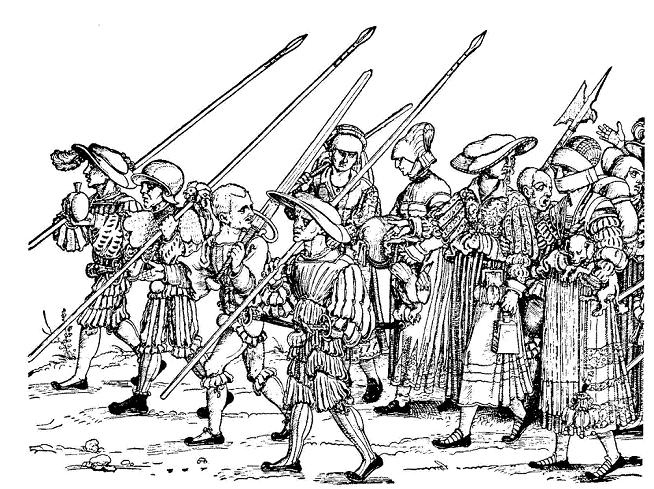
Some attribute this change to wider changes in social attitudes due to Protestant Reformation and the subsequent Catholic Counter-Reformation, both of which wanted to impose a more strict morality.
But I think the main reason was increasing professionalization of armies.
But I think the main reason was increasing professionalization of armies.

By the end of the 16th century, the wild days of mercenary life such as during the Italian Wars of 1494-1559, were over.
The soldiers became subjected to increasingly stricter discipline.
Military developments also made them more replaceable and gave them less room to bargain.
The soldiers became subjected to increasingly stricter discipline.
Military developments also made them more replaceable and gave them less room to bargain.

The pioneers of this were the Dutch as William the Silent needed to maintain the support of local population for the Dutch Revolt.
Therefore he needed to maintain strict discipline among his soldiers so that they wouldn't pester the locals and alienate them.
Therefore he needed to maintain strict discipline among his soldiers so that they wouldn't pester the locals and alienate them.

For example William the Silent provided supplies and lodgings for his soldiers in garrison towns, but their wives and children and other "useless followers" did not receive anything and had to be taken care of by soldiers, therefore discouraging them to be around. 
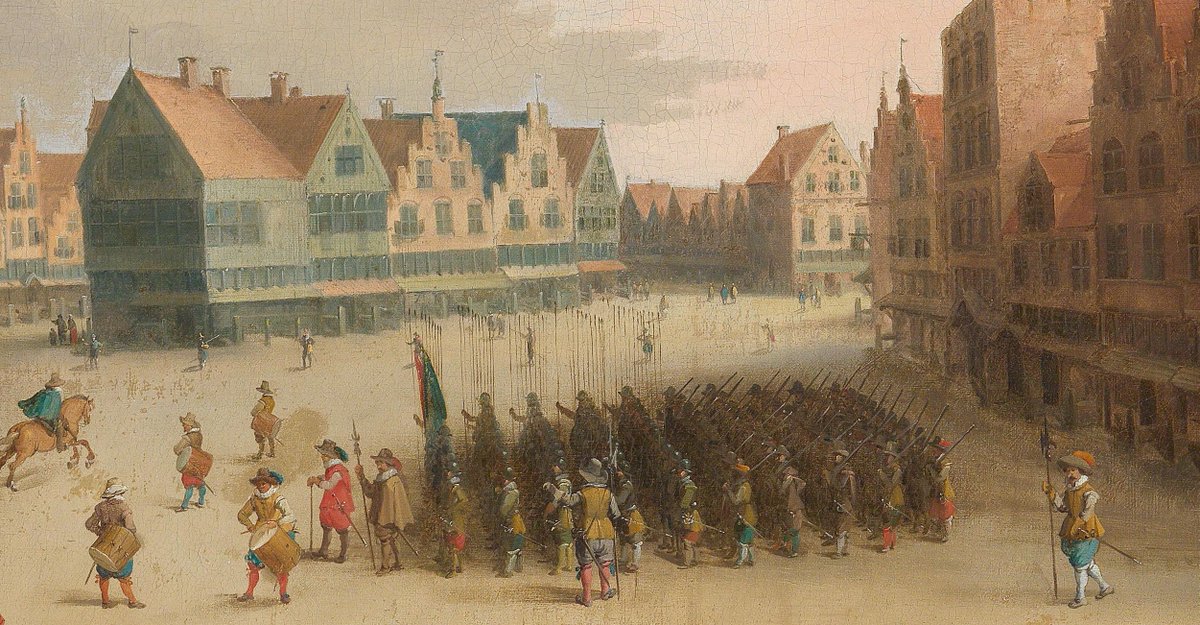
Landsknecht mercenaries gradually became mere soldiers.
The office of Hurenwaibel gradually became extinct.
The Dutch removed the Hurenwaibel by 1572, Gustavus Adolphus abolished him in 1621 and the German states had done the same by the end of the Thirty Years' War.
The office of Hurenwaibel gradually became extinct.
The Dutch removed the Hurenwaibel by 1572, Gustavus Adolphus abolished him in 1621 and the German states had done the same by the end of the Thirty Years' War.

Sources:
Idan Sherer, Warriors for a Living: The Experience of the Spanish Infantry in the Italian Wars, 1494–1559 (Leiden: Brill, 2017), 97-101.
David Parrot, The Business of War: Military Enterprise and Military Revolution in Early Modern Europe (Cambridge: Cambridge University… twitter.com/i/web/status/1…
Idan Sherer, Warriors for a Living: The Experience of the Spanish Infantry in the Italian Wars, 1494–1559 (Leiden: Brill, 2017), 97-101.
David Parrot, The Business of War: Military Enterprise and Military Revolution in Early Modern Europe (Cambridge: Cambridge University… twitter.com/i/web/status/1…
• • •
Missing some Tweet in this thread? You can try to
force a refresh









